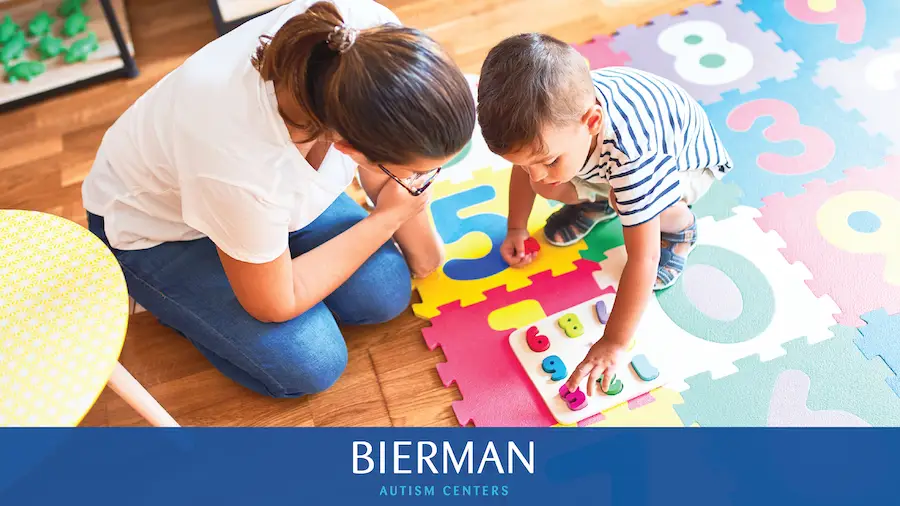Applied Behavior Analysis (ABA) therapy is becoming increasingly common in educational settings. More often than ever, schools are turning toward ABA providers to support the behavioral, social, and academic needs of their students with autism spectrum disorder (ASD) and other developmental disabilities. ABA therapists, including Board Certified Behavior Analysts® (BCBAs®) and Registered Behavior Technicians® (RBTs®), play a critical role in learning outcomes for these students.
What is ABA Therapy
ABA therapy is an evidence-based approach to understanding and improving behavior. The principles of ABA are based on the science of learning and behavior. The goal of ABA is to help learners develop the skills and behaviors needed for a more
What do ABA Therapists do?
ABA therapists work one-on-one or in small groups. Under the supervision of a BCBA®, behavior technicians use behavior-analytic principles to teach skills and implement behavior support plans (BSP) to reduce behaviors that are harmful or interfere with learning.
ABA therapists target many different skills, including:
- Communication skills, such as requesting items that they want or need, following instructions, asking for help, and expressing emotions
- Social skills, including self-advocacy, peer interactions, and understanding nonverbal cues.
- Self-help skills to develop independence in toileting, washing hands, dressing, eating, and following daily routines.
- Self-regulation to support learners in managing emotions and navigating transitions.
ABA Teaching Strategies
Behavior technicians implement treatment plans as designed and directed by the BCBA. These plans are individualized to each child’s unique needs, preferences, and learning style, ensuring the interventions are effective and promote meaningful outcomes.
Some of the evidence-based strategies ABA therapists use include:
- Positive reinforcement: Rewarding desired behaviors to increase the likelihood of them occurring again in the future.
- Token economy: A reinforcement strategy consisting of delivering tokens for exhibiting specific behaviors. The tokens can then be exchanged for preferred items or activities.
- Task analysis and chaining: Breaking down a complex skill into manageable steps and teaching the chain in a specific sequence.
- Prompting and prompt fading: Providing support to evoke the correct response, then gradually reducing support until the learner is independent with the skill.
- Functional communication training (FCT): Teaching learners to communicate their wants and needs in adaptive ways.
- Shaping: Systematically reinforcing approximations toward an end goal.
Instructional Approaches in ABA
There are many different teaching models within ABA. There is no one-size-fits-all approach, so BCBAs use their clinical expertise to structure therapy in a way that’s most beneficial for each learner’s needs. Some of the main methodologies include:
- Natural environment teaching (NET): Teaching skills within the learner’s natural environment, using naturally occurring situations to teach new skills.
- Discrete trial training (DTT): A structured approach to teaching with each trial consisting of a clear instruction, response, and consequence (e.g., reinforcement or error correction).
- Pivotal response training (PRT): A naturalistic teaching method focused on pivotal skills in communication, social interaction, and learning. The areas of focus include motivation, initiation, and responding to multiple cues.
- Fluency based instruction (FBI): a precision teaching based approached where learners are practicing skills in short bursts to focus on the skill becoming fluent and automatic.
What Does an ABA Therapist Do in the Classroom?
ABA therapists can play different roles in a school setting, depending on the needs of the student(s), teacher(s), and the classroom structure. Some therapists support one specific learner in the classroom, guiding them through the school day. Others work with multiple students, supporting learners as needed.
Through collaborations with the school and therapy team, the specific duties of RBTs® are determined based on each student’s individual goals, support needs, and services outlined in the Individualized Education Program (IEP).
The responsibilities of a school-based ABA therapist may include:
- Behavior management: Implementing an individualized behavior intervention plan to reduce interfering behaviors and reinforce more adaptive ones.
- Teaching skills: Using ABA techniques to teach social, communication, and academic skills.
- Data collection: To monitor progress, ABA therapists record data on student behavior and skill acquisition.
- Modifying the learning environment: BCBAs may recommend or implement changes to the classroom setting—such as adding visual supports, reducing distractions, or flexible seating—to help students navigate the environment more effectively, promoting a more positive, accessible, and supportive learning experience.
What are the Benefits of ABA in Schools?
As experts in behavior management and skill development, ABA providers in the classroom can enhance the educational experience for students with autism and other developmental needs. Tailored support in the classroom environment promotes academic success and many other benefits, including the following.
Academic & Behavioral Benefits
- Supports individualized learning needs
- Guides children in reducing behaviors that may limit progress while reinforcing positive actions that help them thrive.
- Increases engagement and motivation
- Provides data-driven insights for behavioral and academic performance
- Guides educators in implementing behavior change strategies
Social, Communication, and Functional Benefits
- Improving functional communication
- Facilitating skill generalization
- Fostering independence in classroom routines
- Improving classroom participation
- Supporting an inclusive school environment
- Facilitating peer engagement
How is ABA Therapy Funded in Schools?
Each state and school district varies, but there are various avenues for children to receive ABA therapy in schools. In certain circumstances, families may use insurance to fund services provided during school hours, with insurance and school approval. This is dependent on both the school and insurance to approve, which some funding sources do not allow providers to provide ABA in the school setting. Alternatively, some school districts hire ABA therapists internally or contract with ABA providers to incorporate ABA into their special education team.
Collaboration Among Therapy Teams, Educators, and Caregivers
Collaboration is key to success when incorporating ABA programs into the school setting. While ABA therapy services can be highly beneficial in schools, it takes a thoughtful and coordinated approach to ensure therapy teams are enhancing—not disrupting—the classroom experience. When receiving ABA therapy services outside of school, it is also important for the therapy team and school to collaborate on goals and carryover of skills worked on in both environments.
Effective collaboration requires open communication among BCBAs, teachers, related service providers, parents, and caregivers. When everyone works together through open communication, shared data, and joint problem-solving, ABA providers can complement classroom instruction and support individualized learning.
Can ABA Strategies be Used Within the General Education Population?
Yes—ABA principles are not limited to students with special learning needs. The principles of applied behavior analysis are based on how people learn and interact with their environment. They are universally applicable across educational settings. Many teachers naturally incorporate behavior-analytic strategies without even realizing it to improve classroom routines, increase on-task behaviors, promote positive peer interactions, and boost motivation.
Next Steps: How to Begin ABA Therapy in School
If your child is currently receiving ABA therapy and you’re interested in accessing services in the school setting, we encourage you to discuss this with your BCBA®. They can review options with you and collaborate with the IEP team to determine if school-based therapy is possible. New to ABA therapy? Reach out to the intake team at Bierman Autism Centers to get started!


